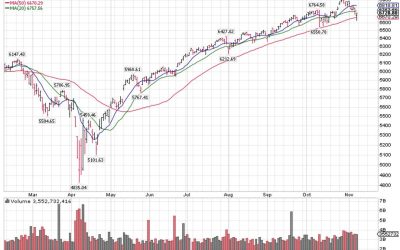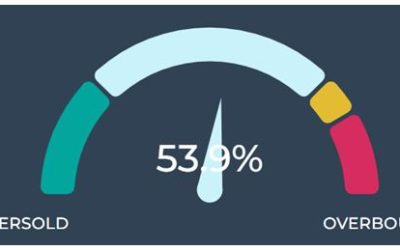by Ivan Martchev
June 17, 2025
Having made it within 98 S&P points of a new all-time high last week, this drive to a new high was interrupted by a military escalation in the Middle East, which is, by definition, unpredictable. We don’t know how long it will last and how it will affect the price of oil, but the higher the oil price goes and the longer this Israel-Iran conflict lasts, the harder it will be to predict how it ends.
If tensions recede this this week, any losses are likely to be quickly reversed, as the economy has not been affected yet. The price of oil will say a lot about how the conflict is developing. A declining oil price would be a signal that the conflict is dying down – which is bullish for equities.
You may be thinking that it is wishful thinking for me to say that the conflict could be over this week, but we have one indication of how long this fighting could last – the cancellation of flights by Israel’s national airline carrier, El Al, to many destinations until June 23. Although that date is certainly not a guarantee, the Israelis are unlikely to have picked an arbitrary date. If that is indeed the case, they are unlikely to start flying right after the hostilities wind down, so hostilities could very well end this week.
Graphs are for illustrative and discussion purposes only. Please read important disclosures at the end of this commentary.
Before the hostilities erupted last week, I thought it was likely that we’d see a fresh all-time high in the S&P 500 in June, before any tariff deadlines kick in July. Even though it was difficult to imagine 18 major trade deals passing smoothly, so far there are indications that all the complications have been manageable with the two most important trade opponents, China and the EU. That can change on a dime, or a tweet, but so far, the glass looks half full. Short of the Iran war spiraling into a full-blown conflict, with more parties joining the alliances on either side, the market is not in a bad place.
It is almost pointless to prognosticate how things will develop this week, as this is a highly uncertain situation. All I can say is that the best-case scenario is for things to remain contained between Iran and Israel. Any strikes against targets outside of the two countries – with other countries entering the conflict – changes the situation from bad to worse. Obviously, I am rooting for the best-case scenario.
Graphs are for illustrative and discussion purposes only. Please read important disclosures at the end of this commentary.
For things to develop according to this best-case scenario, the downside may be contained in the 5700 to 5800 area in the S&P 500, if that, but that would require the conflict not spiraling beyond the present two countries. It is worth pointing out that the European markets, which were hot earlier in the year, have not been doing that great in the past week, even before the Israel-Iran crisis erupted.
This could be because the other major conflict going on – the one between Russia and Ukraine – seems to be heating up, which typically happens in the summer. Between Iran, Ukraine and the trade war, we have plenty of unknowns, which makes projecting short-term stock trends difficult.
The post 6-17-25: No New Highs Until the Middle East Calms Down appeared first on Navellier.








